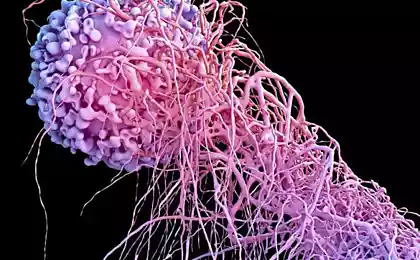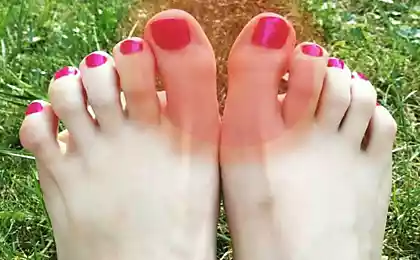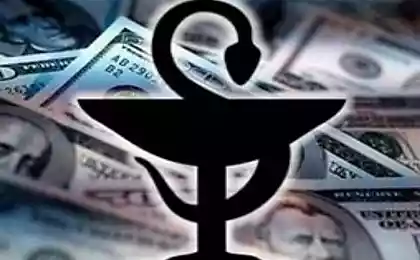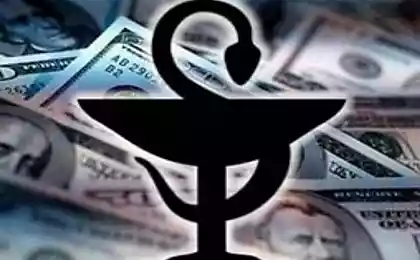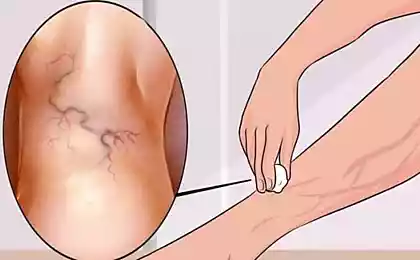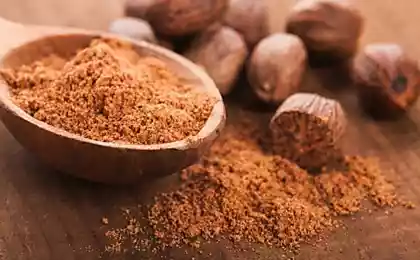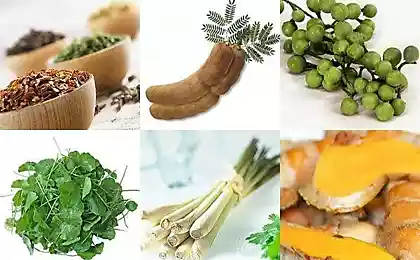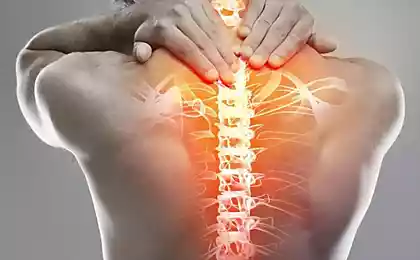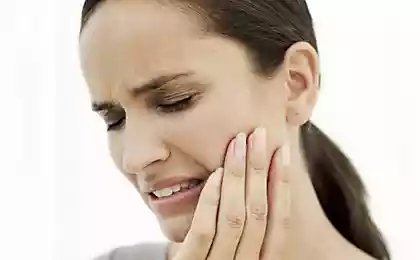671
What varicose veins are afraid of: effective folk treatments
The use of synthetic drugs for the treatment of any diseases, including varicose veins, always leads to any unpleasant consequences. But the treatment of varicose veins with folk remedies, if not 100% safe, the side effects of traditional medicine are much inferior to the negative effect of medications.
And the cost of folk treatment is several times less. That is why folk remedies for the treatment of varicose veins, today, have not lost their relevance and are widely used by people.
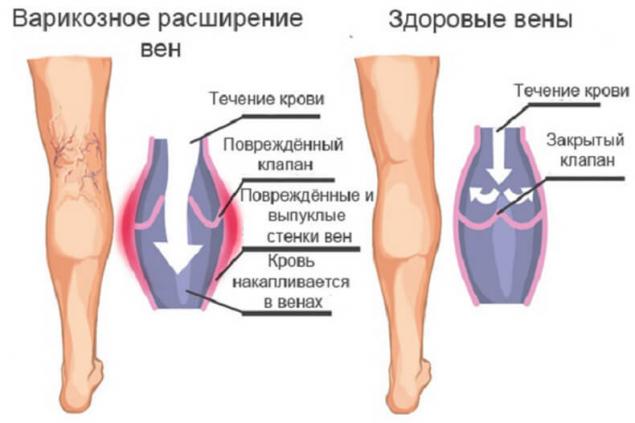
For the treatment of varicose veins folk remedies can be used ointments, compresses, applications and mixtures for external use, as well as infusions and decoctions for ingestion. In any case, the main goal of folk treatment of varicose veins is to improve blood circulation.
It should be understood that such treatment will be most effective in the initial stages of the disease (the appearance of a vascular mesh and a feeling of heaviness in the legs), and least effective in advanced cases, when only surgery can help. Therefore, it is necessary to monitor your health and at the first symptoms to consult a doctor to confirm your suspicions.
Stagnant phenomena leading to varicose veins usually first affect the lower limbs, so it is the recipes of folk remedies for varicose veins of the legs that are most popular among the population. Let us dwell in detail on the main recipes of traditional medicine.
Ancient recipes for ointments from varicose veinsAll folk ointments for varicose veins are prepared on the basis of vegetable oil, often olive because of the high content of arachidonic acid. To make the mixture thicker, in ancient recipes it is recommended to add melted animal fat to the ointment. This is what concerns the basis of the ointment, and to tone the walls of blood vessels and strengthen them, folk (grandmother) recipes for varicose veins recommend using such medicinal plants as:
Varicose tincturesNo less popular are various infusions from varicose veins, which are much easier to cook, but much longer. The basis of all infusions is vodka, so if there are areas with damaged skin on the legs, then such treatment methods should be refrained from.
The most effective is Kalanchoe tincture, it is often added white acacia or comfrey in a ratio of 1: 1. Such infusions are prepared as follows: the leaves of the medicinal plant are finely shinked, poured into a jar, poured with vodka and allowed to stand for 10-14 days in a dark place.
The finished infusion will need to be rubbed into the skin of the legs from the foot to the knee for 3 months twice a day.
Apple cider vinegar with varicose veins as a means No. 1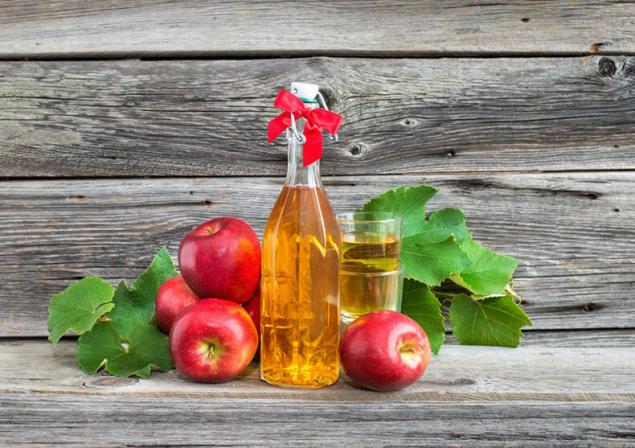
Treatment of varicose veins is a fairly popular and effective method of combating the disease. Apple cider vinegar helps with varicose veins because it consists of more than 20 minerals and trace elements necessary for vessels, as well as vitamins C, A, B, which allows for its regular use to achieve:
What oils are treated with varicose veins?
Along with creams, infusions and vinegar, various essential oils are widely used. With varicose veins, oils are most often used: castor, black cumin, sandalwood, garlic, flax and others.
Essential oils against varicose veins are usually used in 2 ways:
Add a few drops of 2-3 different oils in a bath with warm water, which must be taken daily in the evenings. Added to a massage cream or massage oil and gentle movements from the ankles to the thigh rubbed into areas with affected veins. This use of oil allows not only to strengthen the walls of blood vessels, but also to remove swelling in the lower extremities.
Apitherapy, propolis, bee subpeasant and honey for varicose veins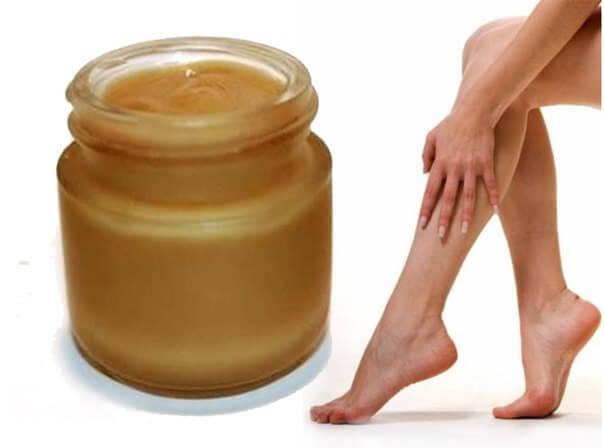
Treatment of varicose veins by bees has a centuries-old history and it is not surprising if you analyze in detail the composition and benefits of various beekeeping products, whether it is poison, submortar, propolis or honey. All these recipes are quite good and effective, but not always available to urban residents.
The easiest way is to get honey. Treatment of varicose veins with honey occurs as follows: a layer of honey is applied to the canvas and applied to inflamed veins, wrapped on top with a plastic film and fixed with a bandage. On the first day of such treatment, the compress is kept on the leg for 2 hours, on the second day - 3, on the third - 4, and then the compress with honey is left for the whole night. The duration of honey therapy is usually 2-3 weeks.
Do tomatoes help with varicose veins?For the treatment of varicose veins, not any tomatoes are used, but only immature green ones.
Treatment of varicose veins with green tomatoes is quite simple and is as follows: the tomato is cut in half, 1 half is applied with pulp to an inflamed vein and kept until they feel a burning sensation. The tomato is taken, and the area of skin is washed with cool water. After that, the second half of the tomato is applied to the leg, and so repeat 4 times. With daily use of green tomato against varicose veins, for 3 weeks you can notice a pale and softening of the venous nodes.
Treatment of varicose veins with nutmeg
Nutmeg with varicose veins is used due to its property to stimulate the blood circulation process and relieve inflammation of the veins. Prepare the medicine from nutmeg as follows: whole nuts are rubbed on a grater or grinded in a coffee grinder, 1/3 of a teaspoon of the powder is poured with a glass of boiling water, cooled to room temperature, add a spoonful of honey and insist for another 20 minutes.
Drink such a decoction in the morning before breakfast. It is important to prepare a fresh portion of powder every day. Otherwise, the essential oils will weather, and the drink will lose its medicinal properties.
There is another recipe using nutmeg: 200 grams of grated nutmeg is poured with a liter of vodka and insisted for 10 days, then taken three times a day for 20 drops for three months.
Cabbage will help with varicose veins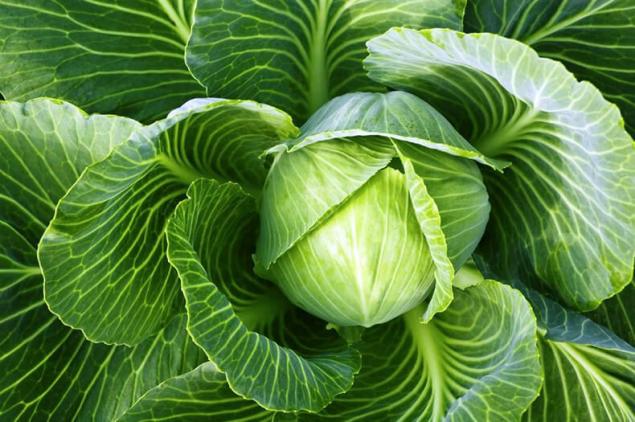
Since ancient times, doctors have used cabbage leaves for varicose veins to relieve inflammation. And this is not surprising if you look at how many vitamins and trace elements are contained in the leaves of cabbage. Cabbage leaves in the treatment of varicose veins are used in the form of a compress.
The compress is done as follows: the cabbage leaf is rolled with a roller or beaten off, then one of its sides is lubricated with vegetable oil and applied to an inflamed vein, the cabbage leaf is fixed with a bandage on top and left for a day. The next day, the procedure is repeated and done 30 times.
Ginger for varicose veins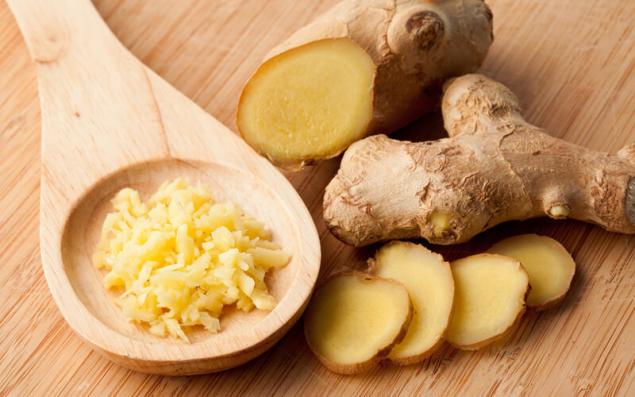
Ginger with varicose veins can be used as a means for internal or external use. So ginger tea is a good tool not only to prevent inflammation of the veins, but also to treat the disease at any stage of its manifestation. Preparing such tea is very simple: it is enough to cut off a small round piece of ginger from the root, pour it with boiling water, let it stand for 15 minutes. It should be noted that in addition to normalizing blood circulation, such a drink has a beneficial effect on metabolism, so drinking ginger is especially useful for those who have problems with veins due to excess weight.
Compress of ginger is made as follows: the root is finely rubbed, mixed with honey and applied to the inflamed vein for 3-4 hours. To enhance the effect, it is recommended to wrap your feet in something warm.
Useful properties of kalina in varicose veins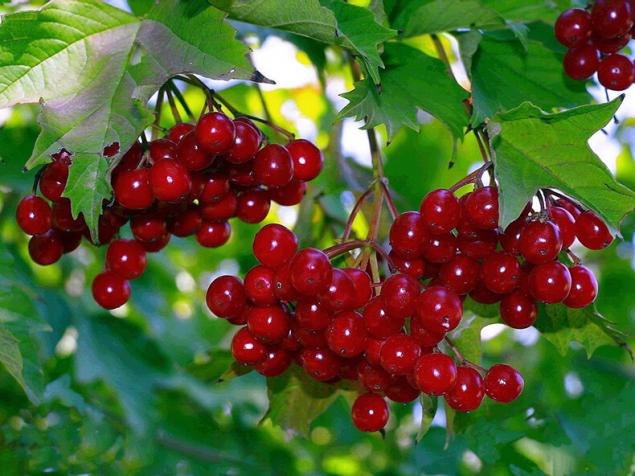
Like ginger, kalina with varicose veins can be used either as a compress or as a fortified drink. In the first case, the patient will need to take fresh berries of potassium, grind them to the state of gruel, lay out the mixture on a cloth, apply to the area of skin with an inflamed vein and fix with a bandage. This compress is best done before bedtime and leave overnight.
A vitaminized drink made of kalina, in its essence, is juice mixed with honey in the proportion of 2 tbsp of honey per 500 ml of juice. Drink it should be 2 tbsp. 4 times a day for a month and a half.
Action of pumpkin in varicose veins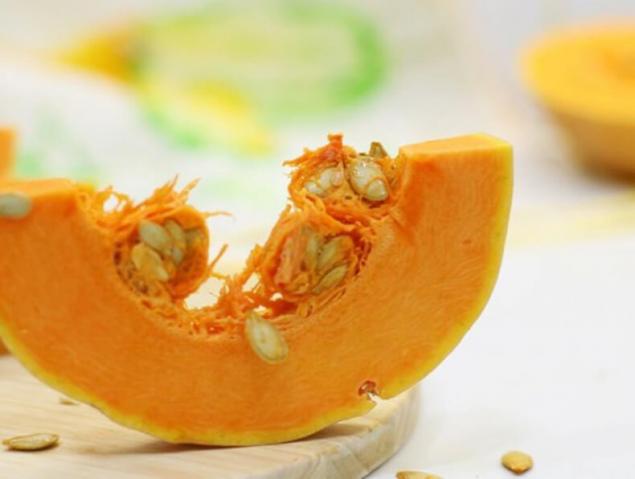
Everyone knows that pumpkin is an extremely useful product containing many vitamins and trace elements. For the treatment of varicose veins, internal pulp, previously released from seeds, is used. This pulp should completely rub the limb with problem veins, wrap something warm and leave overnight. The remaining gruel can be stored in the refrigerator.
Since the effect of pumpkin compresses is very mild, patience should be used when using this method of treatment.
Adam's apple with varicose veins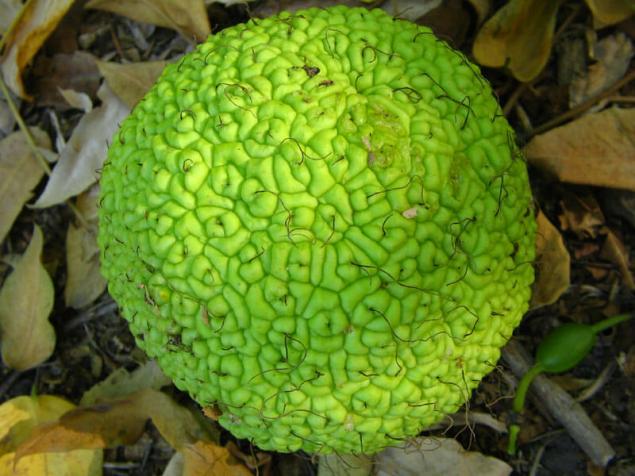
Adam’s apple for the treatment of varicose veins is used in the form of an ointment, which is prepared as follows: a glass jar is taken, which is filled with a layer of babe 15 mm thick, then over the babe is cut with slices of maclura fruits (Adam’s apple) with a layer of 10 mm, then again a layer of babe and so on until the jar is filled. At the same time, it is important that the last layer is a babe. After the jar is filled, it is put on a steam bath or in the oven for a slow fire for a day (should not boil), then filter, cool and rub 1-2 times throughout the day on problem areas.
Varicose veins are very afraid of lemon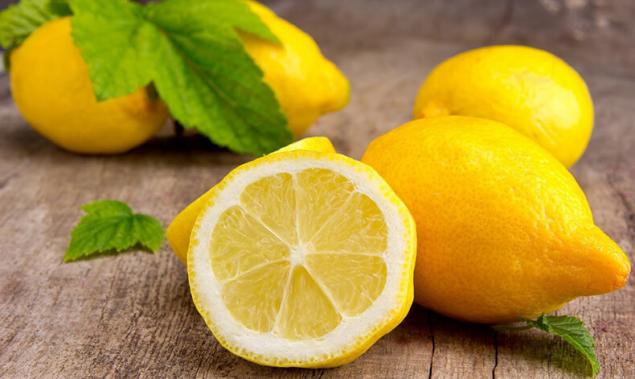
With varicose veins, lemon for therapeutic purposes can be used both internally and externally in the form of pain relief compresses. Preparing such a compress is easy. Take a lemon, cut in circles, applied to inflamed areas and wrapped with a bandage or compressed paper. It is necessary to wear a compress throughout the day, 2-3 times replacing the lemon with fresh.
Lemon juice cleans the vessels and increases the elasticity of their walls, so this citrus should be included in your diet for anyone who has problems with veins or wants to prevent their appearance.
One of the most effective medicines of traditional medicine against inflammation of the veins is the following: 6 lemons are peeled from the skin and squeeze juice out of them, 5 cloves of garlic and 3 leaves of the golden mouth are crushed, 2 glasses of honey are added and everything is thoroughly mixed. The resulting mixture is left to infuse in glassware for 1 week in a dark place. This medicine is used for 4 tsp. once a day for a month.
Treatment of varicose veins with potatoes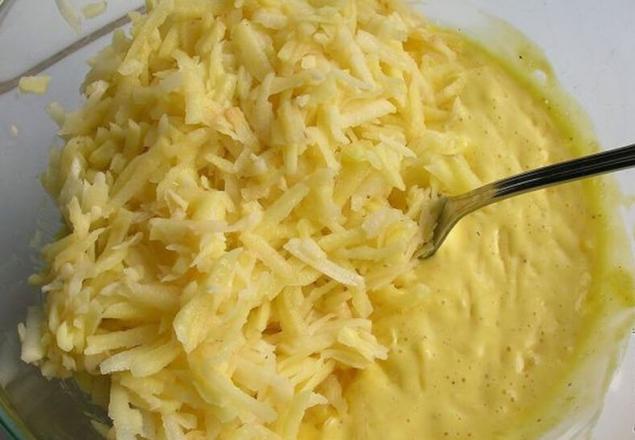
Potatoes with varicose veins are used in the form of compresses prepared from the tubers of this plant.
Take a few tubers of potatoes, washed and cleaned of the peel, then they must be rubbed on the grate and put a layer of 1 cm on the inflamed veins. On top of the layer of potatoes wrapped about 8 layers of gauze, which is also impregnated with potato juice. Keep such a compress should be at least 4 hours, it is important that fresh grated potatoes are used for it, and not lying potatoes.
Mummy with varicose veins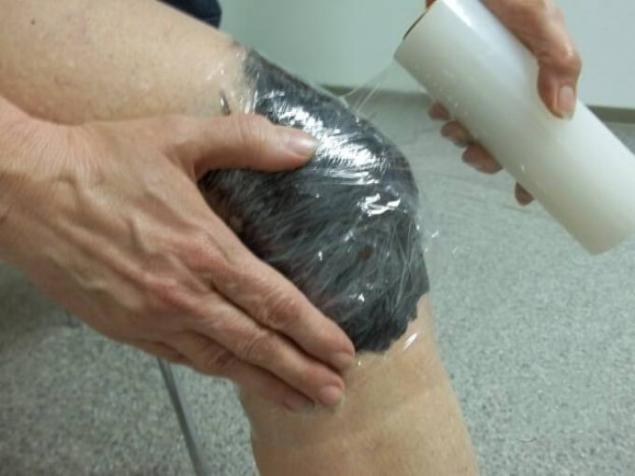
Mummy with varicose veins is used due to its properties to dissolve stagnation and tumors. Especially well helps ointment from mummy in the early stages of the disease. This ointment is created as follows: 1 part of Altai resin is given for 5 parts of Vaseline, all this is thoroughly mixed and rubbed in soft and smooth movements three times a day in areas with inflamed veins. Wash off the remains of the ointment can not earlier than an hour from the moment of its application.
Also, mummy can be used inside: a piece of resin the size of a match head is mixed with 1 tbsp of honey and milk and drunk twice a day for a month.
Is fish oil used for varicose veins?Fish oil is mainly used orally, which contributes to the normalization of metabolism and weight loss, as one of the main causes of congestion in the veins. However, there are other uses of fish oil.
Take fish oil and may honey in a ratio of 1: 1 and mixed to a homogeneous mass. The resulting ointment is applied to linen fabric, wrapped with it a sick limb and left overnight.
Varicose onions
The greatest effect in varicose veins is not the bulb itself, but its husk. Onion husks from varicose veins are involved in various recipes.
Treatment of varicose garlicGarlic with varicose veins is recommended to be used in the form of a compress, which is prepared as follows: garlic with white husk is taken and crushed, then butter is added in a ratio of 1: 2. The resulting ointment before bedtime is lubricated with inflamed veins and wrapped on top with permanent paper or bandage. In the morning, the remains of the ointment are washed away. The procedure should be repeated every day for several weeks.
How do you take hydrogen peroxide?Treatment of varicose veins with hydrogen peroxide can occur in 2 ways:
Can varicose veins be treated with salt?
Salt with varicose veins is used for baths or salt dressings. It is best to use sea salt. It is diluted with water until liquid gruel is obtained. This gruel is used for salt dressings. Salt dressings for varicose veins should be changed several times a day, withstanding each no more than 4 hours.
In some recipes, salt gruel is recommended to cool in the refrigerator to zero temperature, make a compress in the morning and keep until the salt is heated, and then remove its remains from the skin to avoid irritation.
The effect of treating varicose veins with salt dressings usually occurs a month from the start of procedures.
Treatment of varicose soda
To use soda from varicose veins recommended Zalmanov. According to his recipe, warm water is poured into a large container and dissolve 200 g of baking soda and 70 g of alum in it. All this is thoroughly mixed until completely dissolved, then the legs are placed in a container with water. The duration of such a bath should be about 15 minutes. The course of treatment with such foot baths is episodic: 2 days after 1 for two weeks.
If the disease climbed high up the legs, then you can use a bath with soda, while doing a more concentrated solution is not worth it. After such a bath, the body is not wiped, but wrapped in a towel.
How to treat varicose veins with household soap?
Even household soap can be used to treat varicose veins. A bar of household soap (200 g) is taken and passed through a meat grinder, we add 200 g of old lard and the same amount of onion and millet (it is desirable to grind with a roller). All this must be mixed to the state of ointment and left for a day. The resulting ointment is applied as compresses at night, wrapping on top with a linen napkin and compressed paper.
What clay is used for varicose veins?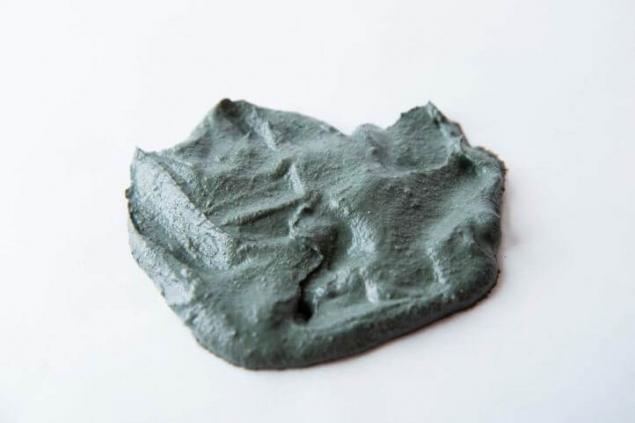
Treatment of varicose veins with blue clay is considered the most optimal of all clay varieties, since it is believed that this type of clay more effectively affects the affected veins. Clay with varicose veins is used in the form of applications.
For application, blue clay with varicose veins is diluted with water to a state of thick sour cream, then applied to areas of skin with swollen veins 2 cm thick, and tied with a terry towel on top. The duration of this application should be about two hours, then the clay can be washed away. Applications with clay are recommended to be carried out daily for a month and a half, after which you can replace them with wrapping your legs with a wet towel soaked in clay solution.
How to prepare a healing tincture of walnuts: 8 recipes
Effective folk remedies for gout
Compresses for varicose veinsAs you can see, treatment with compresses of varicose veins is quite common. At the same time, the compresses themselves can be dry or wet, whether it is the application of cabbage leaves or the use of applications on an oily or alcohol basis. This will not affect the quality of treatment. It all depends on the recipe chosen.
It should also be noted the ease of use of compresses and the availability of therapeutic agents for their use. After all, there is nothing difficult in getting a little beet for a compress for varicose veins or the same cabbage. But the therapeutic effect of such procedures is huge, because the effect occurs directly in the area of congestion in the veins. The main thing is not to use funds to which the patient is allergic.
P.S. And remember, just changing our consumption – together we change the world!
Source: www.varikoz.org/narodnoe-lechenie-1
And the cost of folk treatment is several times less. That is why folk remedies for the treatment of varicose veins, today, have not lost their relevance and are widely used by people.

For the treatment of varicose veins folk remedies can be used ointments, compresses, applications and mixtures for external use, as well as infusions and decoctions for ingestion. In any case, the main goal of folk treatment of varicose veins is to improve blood circulation.
It should be understood that such treatment will be most effective in the initial stages of the disease (the appearance of a vascular mesh and a feeling of heaviness in the legs), and least effective in advanced cases, when only surgery can help. Therefore, it is necessary to monitor your health and at the first symptoms to consult a doctor to confirm your suspicions.
Stagnant phenomena leading to varicose veins usually first affect the lower limbs, so it is the recipes of folk remedies for varicose veins of the legs that are most popular among the population. Let us dwell in detail on the main recipes of traditional medicine.
Ancient recipes for ointments from varicose veinsAll folk ointments for varicose veins are prepared on the basis of vegetable oil, often olive because of the high content of arachidonic acid. To make the mixture thicker, in ancient recipes it is recommended to add melted animal fat to the ointment. This is what concerns the basis of the ointment, and to tone the walls of blood vessels and strengthen them, folk (grandmother) recipes for varicose veins recommend using such medicinal plants as:
- horse chestnut
- Kalanchoe;
- wormwood
- white willow bark;
- lice
- celandine
- Cabbage.
Varicose tincturesNo less popular are various infusions from varicose veins, which are much easier to cook, but much longer. The basis of all infusions is vodka, so if there are areas with damaged skin on the legs, then such treatment methods should be refrained from.
The most effective is Kalanchoe tincture, it is often added white acacia or comfrey in a ratio of 1: 1. Such infusions are prepared as follows: the leaves of the medicinal plant are finely shinked, poured into a jar, poured with vodka and allowed to stand for 10-14 days in a dark place.
The finished infusion will need to be rubbed into the skin of the legs from the foot to the knee for 3 months twice a day.
Apple cider vinegar with varicose veins as a means No. 1

Treatment of varicose veins is a fairly popular and effective method of combating the disease. Apple cider vinegar helps with varicose veins because it consists of more than 20 minerals and trace elements necessary for vessels, as well as vitamins C, A, B, which allows for its regular use to achieve:
- increased skin tone;
- strengthening of vessel walls;
- removal of swelling;
- Improved circulation.
What oils are treated with varicose veins?

Along with creams, infusions and vinegar, various essential oils are widely used. With varicose veins, oils are most often used: castor, black cumin, sandalwood, garlic, flax and others.
Essential oils against varicose veins are usually used in 2 ways:
Add a few drops of 2-3 different oils in a bath with warm water, which must be taken daily in the evenings. Added to a massage cream or massage oil and gentle movements from the ankles to the thigh rubbed into areas with affected veins. This use of oil allows not only to strengthen the walls of blood vessels, but also to remove swelling in the lower extremities.
Apitherapy, propolis, bee subpeasant and honey for varicose veins

Treatment of varicose veins by bees has a centuries-old history and it is not surprising if you analyze in detail the composition and benefits of various beekeeping products, whether it is poison, submortar, propolis or honey. All these recipes are quite good and effective, but not always available to urban residents.
The easiest way is to get honey. Treatment of varicose veins with honey occurs as follows: a layer of honey is applied to the canvas and applied to inflamed veins, wrapped on top with a plastic film and fixed with a bandage. On the first day of such treatment, the compress is kept on the leg for 2 hours, on the second day - 3, on the third - 4, and then the compress with honey is left for the whole night. The duration of honey therapy is usually 2-3 weeks.
Do tomatoes help with varicose veins?For the treatment of varicose veins, not any tomatoes are used, but only immature green ones.
Treatment of varicose veins with green tomatoes is quite simple and is as follows: the tomato is cut in half, 1 half is applied with pulp to an inflamed vein and kept until they feel a burning sensation. The tomato is taken, and the area of skin is washed with cool water. After that, the second half of the tomato is applied to the leg, and so repeat 4 times. With daily use of green tomato against varicose veins, for 3 weeks you can notice a pale and softening of the venous nodes.
Treatment of varicose veins with nutmeg

Nutmeg with varicose veins is used due to its property to stimulate the blood circulation process and relieve inflammation of the veins. Prepare the medicine from nutmeg as follows: whole nuts are rubbed on a grater or grinded in a coffee grinder, 1/3 of a teaspoon of the powder is poured with a glass of boiling water, cooled to room temperature, add a spoonful of honey and insist for another 20 minutes.
Drink such a decoction in the morning before breakfast. It is important to prepare a fresh portion of powder every day. Otherwise, the essential oils will weather, and the drink will lose its medicinal properties.
There is another recipe using nutmeg: 200 grams of grated nutmeg is poured with a liter of vodka and insisted for 10 days, then taken three times a day for 20 drops for three months.
Cabbage will help with varicose veins

Since ancient times, doctors have used cabbage leaves for varicose veins to relieve inflammation. And this is not surprising if you look at how many vitamins and trace elements are contained in the leaves of cabbage. Cabbage leaves in the treatment of varicose veins are used in the form of a compress.
The compress is done as follows: the cabbage leaf is rolled with a roller or beaten off, then one of its sides is lubricated with vegetable oil and applied to an inflamed vein, the cabbage leaf is fixed with a bandage on top and left for a day. The next day, the procedure is repeated and done 30 times.
Ginger for varicose veins

Ginger with varicose veins can be used as a means for internal or external use. So ginger tea is a good tool not only to prevent inflammation of the veins, but also to treat the disease at any stage of its manifestation. Preparing such tea is very simple: it is enough to cut off a small round piece of ginger from the root, pour it with boiling water, let it stand for 15 minutes. It should be noted that in addition to normalizing blood circulation, such a drink has a beneficial effect on metabolism, so drinking ginger is especially useful for those who have problems with veins due to excess weight.
Compress of ginger is made as follows: the root is finely rubbed, mixed with honey and applied to the inflamed vein for 3-4 hours. To enhance the effect, it is recommended to wrap your feet in something warm.
Useful properties of kalina in varicose veins

Like ginger, kalina with varicose veins can be used either as a compress or as a fortified drink. In the first case, the patient will need to take fresh berries of potassium, grind them to the state of gruel, lay out the mixture on a cloth, apply to the area of skin with an inflamed vein and fix with a bandage. This compress is best done before bedtime and leave overnight.
A vitaminized drink made of kalina, in its essence, is juice mixed with honey in the proportion of 2 tbsp of honey per 500 ml of juice. Drink it should be 2 tbsp. 4 times a day for a month and a half.
Action of pumpkin in varicose veins

Everyone knows that pumpkin is an extremely useful product containing many vitamins and trace elements. For the treatment of varicose veins, internal pulp, previously released from seeds, is used. This pulp should completely rub the limb with problem veins, wrap something warm and leave overnight. The remaining gruel can be stored in the refrigerator.
Since the effect of pumpkin compresses is very mild, patience should be used when using this method of treatment.
Adam's apple with varicose veins

Adam’s apple for the treatment of varicose veins is used in the form of an ointment, which is prepared as follows: a glass jar is taken, which is filled with a layer of babe 15 mm thick, then over the babe is cut with slices of maclura fruits (Adam’s apple) with a layer of 10 mm, then again a layer of babe and so on until the jar is filled. At the same time, it is important that the last layer is a babe. After the jar is filled, it is put on a steam bath or in the oven for a slow fire for a day (should not boil), then filter, cool and rub 1-2 times throughout the day on problem areas.
Varicose veins are very afraid of lemon

With varicose veins, lemon for therapeutic purposes can be used both internally and externally in the form of pain relief compresses. Preparing such a compress is easy. Take a lemon, cut in circles, applied to inflamed areas and wrapped with a bandage or compressed paper. It is necessary to wear a compress throughout the day, 2-3 times replacing the lemon with fresh.
Lemon juice cleans the vessels and increases the elasticity of their walls, so this citrus should be included in your diet for anyone who has problems with veins or wants to prevent their appearance.
One of the most effective medicines of traditional medicine against inflammation of the veins is the following: 6 lemons are peeled from the skin and squeeze juice out of them, 5 cloves of garlic and 3 leaves of the golden mouth are crushed, 2 glasses of honey are added and everything is thoroughly mixed. The resulting mixture is left to infuse in glassware for 1 week in a dark place. This medicine is used for 4 tsp. once a day for a month.
Treatment of varicose veins with potatoes

Potatoes with varicose veins are used in the form of compresses prepared from the tubers of this plant.
Take a few tubers of potatoes, washed and cleaned of the peel, then they must be rubbed on the grate and put a layer of 1 cm on the inflamed veins. On top of the layer of potatoes wrapped about 8 layers of gauze, which is also impregnated with potato juice. Keep such a compress should be at least 4 hours, it is important that fresh grated potatoes are used for it, and not lying potatoes.
Mummy with varicose veins

Mummy with varicose veins is used due to its properties to dissolve stagnation and tumors. Especially well helps ointment from mummy in the early stages of the disease. This ointment is created as follows: 1 part of Altai resin is given for 5 parts of Vaseline, all this is thoroughly mixed and rubbed in soft and smooth movements three times a day in areas with inflamed veins. Wash off the remains of the ointment can not earlier than an hour from the moment of its application.
Also, mummy can be used inside: a piece of resin the size of a match head is mixed with 1 tbsp of honey and milk and drunk twice a day for a month.
Is fish oil used for varicose veins?Fish oil is mainly used orally, which contributes to the normalization of metabolism and weight loss, as one of the main causes of congestion in the veins. However, there are other uses of fish oil.
Take fish oil and may honey in a ratio of 1: 1 and mixed to a homogeneous mass. The resulting ointment is applied to linen fabric, wrapped with it a sick limb and left overnight.
Varicose onions

The greatest effect in varicose veins is not the bulb itself, but its husk. Onion husks from varicose veins are involved in various recipes.
- 2 tbsp. crushed husks pour 100 ml of vodka and insist for 7 days, then strain the tincture and take 20 drops three times a day for 15 minutes before meals.
- 2 tbsp. crushed husks pour 2 glasses of boiling water, insist under the lid for 6 hours, filter and three times a day drink a quarter glass before meals for a week and a half.
Treatment of varicose garlicGarlic with varicose veins is recommended to be used in the form of a compress, which is prepared as follows: garlic with white husk is taken and crushed, then butter is added in a ratio of 1: 2. The resulting ointment before bedtime is lubricated with inflamed veins and wrapped on top with permanent paper or bandage. In the morning, the remains of the ointment are washed away. The procedure should be repeated every day for several weeks.
How do you take hydrogen peroxide?Treatment of varicose veins with hydrogen peroxide can occur in 2 ways:
- Orally, starting with 1 drop per 3 tbsp of water three times a day 2 hours after eating. Every day, the concentration of peroxide consumed is increased by 1 drop, bringing up to 10 drops per day, then take a break for 3 days and begin to take 10 drops 2 days after 3.
- Intravenously, a 0.15% hydrogen solution is administered, which allows the release of atomic oxygen, thereby cleaning the walls of blood vessels. A single dose of the solution should not exceed 250 ml.
Can varicose veins be treated with salt?

Salt with varicose veins is used for baths or salt dressings. It is best to use sea salt. It is diluted with water until liquid gruel is obtained. This gruel is used for salt dressings. Salt dressings for varicose veins should be changed several times a day, withstanding each no more than 4 hours.
In some recipes, salt gruel is recommended to cool in the refrigerator to zero temperature, make a compress in the morning and keep until the salt is heated, and then remove its remains from the skin to avoid irritation.
The effect of treating varicose veins with salt dressings usually occurs a month from the start of procedures.
Treatment of varicose soda

To use soda from varicose veins recommended Zalmanov. According to his recipe, warm water is poured into a large container and dissolve 200 g of baking soda and 70 g of alum in it. All this is thoroughly mixed until completely dissolved, then the legs are placed in a container with water. The duration of such a bath should be about 15 minutes. The course of treatment with such foot baths is episodic: 2 days after 1 for two weeks.
If the disease climbed high up the legs, then you can use a bath with soda, while doing a more concentrated solution is not worth it. After such a bath, the body is not wiped, but wrapped in a towel.
How to treat varicose veins with household soap?

Even household soap can be used to treat varicose veins. A bar of household soap (200 g) is taken and passed through a meat grinder, we add 200 g of old lard and the same amount of onion and millet (it is desirable to grind with a roller). All this must be mixed to the state of ointment and left for a day. The resulting ointment is applied as compresses at night, wrapping on top with a linen napkin and compressed paper.
What clay is used for varicose veins?

Treatment of varicose veins with blue clay is considered the most optimal of all clay varieties, since it is believed that this type of clay more effectively affects the affected veins. Clay with varicose veins is used in the form of applications.
For application, blue clay with varicose veins is diluted with water to a state of thick sour cream, then applied to areas of skin with swollen veins 2 cm thick, and tied with a terry towel on top. The duration of this application should be about two hours, then the clay can be washed away. Applications with clay are recommended to be carried out daily for a month and a half, after which you can replace them with wrapping your legs with a wet towel soaked in clay solution.
How to prepare a healing tincture of walnuts: 8 recipes
Effective folk remedies for gout
Compresses for varicose veinsAs you can see, treatment with compresses of varicose veins is quite common. At the same time, the compresses themselves can be dry or wet, whether it is the application of cabbage leaves or the use of applications on an oily or alcohol basis. This will not affect the quality of treatment. It all depends on the recipe chosen.
It should also be noted the ease of use of compresses and the availability of therapeutic agents for their use. After all, there is nothing difficult in getting a little beet for a compress for varicose veins or the same cabbage. But the therapeutic effect of such procedures is huge, because the effect occurs directly in the area of congestion in the veins. The main thing is not to use funds to which the patient is allergic.
P.S. And remember, just changing our consumption – together we change the world!
Source: www.varikoz.org/narodnoe-lechenie-1
